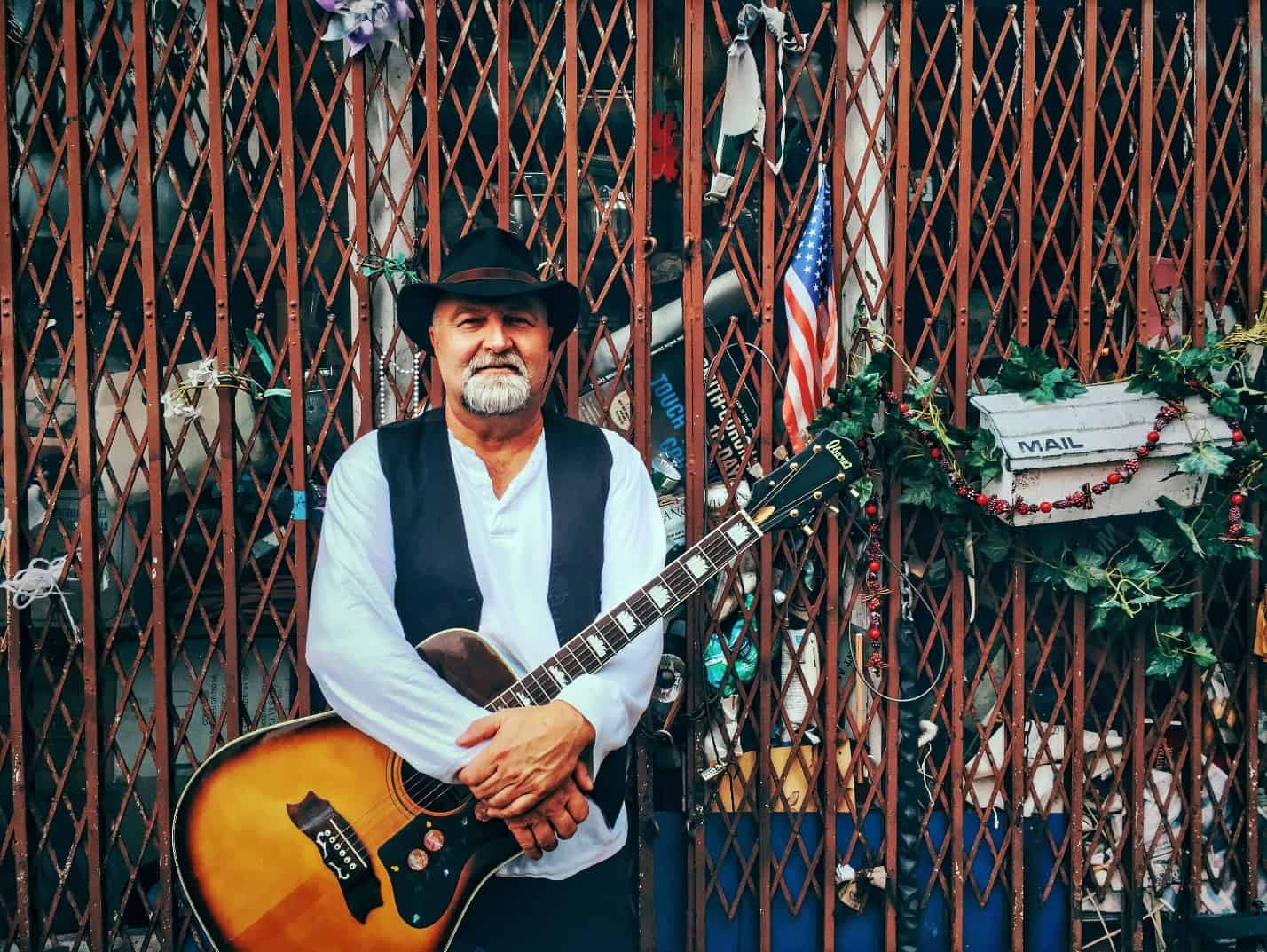“Stanley John Mitchell And His Band of Buddies” might be a long band name but the man behind it has certainly had a deservedly long career.
Originally from New Zealand, Mitchell arrived on the west coast of the US in the late ‘70s with his band Red Alert who had been backing the New Zealand theatre troupe Red Mole. After several months playing in San Francisco’s Bay Area, Red Alert joined Red Mole for a short stint at the Theater of New York City. After these shows Red Mole moved-on to the UK with some of the band but Mitchell and the remaining members decided to stay in NYC. Holed-up in a hotel, broke and without any fixed plan, they eventually decided to hit the sidewalks and busk for cash. To their surprise the street proved an ample stage and the loose change from passers-by started to add-up. When the other members of Red Alert returned from the UK the band changed their name to the Drongos (essentially down-under slang for ‘idiot’) and developed a sharp act with original songs that translated well to street performance. From there it didn’t take long for the Drongos to move from the streets to the stages of CBGB’s and the Ritz. Their building popularity led them to record their self-titled debut album, produced by Steve Katz of Blood Sweat & Tears. A second album Small Miracles produced by five-time Grammy winner John Holbrook, saw the Drongos going back to their roots, capturing the band playing live on the streets of New York. The album became a hit on college radio and in turn the Drongos proceed to play more clubs and universities, while still including their trademark street performance as part of their live set. The Drongos gained many fans, one of the most notable being New Zealand’s prime minister at the time David Lange, who had met the band on a trip to NYC. Although they drew record company interest, a major label recording contact remained elusive and after a 1986 of tour of New Zealand the band split.
Mitchell returned to New York and played drums on many projects in the late ‘80s and early ‘90s including Long Island’s Lone Sharks led by Gene Casey. In the late-90s Mitchell relocated to Los Angeles for several years playing with various artists such as lounge act Dirty Martini and fellow New Zealander Theo Ray. After moving back to NYC it was time for Mitchell to do his own thing as a singer/songwriter. This eventually led to him forming “Stanley John Mitchell and his Band of Buddies” around 2014. The Brooklyn-based trio regularly play venues in Brooklyn and Manhattan, with Bar Chord in Ditmas Park being a favorite. Lead guitarist Mike McMahon is a journeyman player from Staten Island who has played the Americana scene for many years, most notably doing a stint with Buddy Cage, late of the New Riders of The Purple Sage. Bassist Billy Smylie is a Texas native who relocated to New York in the late ‘80s. Also heavily involved in the New York Americana scene, Billy was sideman to David Yazbek as he developed and eventually brought the hit show “The Full Monty” to Broadway.
Many years earlier, the trio had played together as the “Lonesome Debonaires”, backing singer/songwriter Jonathan Gregg. Mitchell says “We played the NY club scene and toured the country hard and fast and soon became very good friends. So, when I decided to put together a band of my own, it was going with solid citizens – people I really liked and could trust as opposed to hiring players I don’t really know that well. I wanted camaraderie as well as musicianship. With these fellows I have both, and know exactly where I stand. All of us have been around the block and know that primarily we’re in it for the pleasure of playing good music with good people.”
With his Band of Buddies, Mitchell is in the unique position of vocalist, guitarist and drummer – simultaneously. With his modified drum kit Mitchell is able to play drums, play guitar and sing at the same time. As well as being technically impressive this makes for an entertaining show. With a combination of originals and some choice covers, Band of Buddies’ music is a mix of Americana via the South Seas. You can also find Mitchell on the drums with Brooklyn’s Crevulators, teaching students a myriad of instruments or in the pottery studio making works of art. Keep a look out for Stanley John Mitchell And His Band of Buddies at a venue near you!









